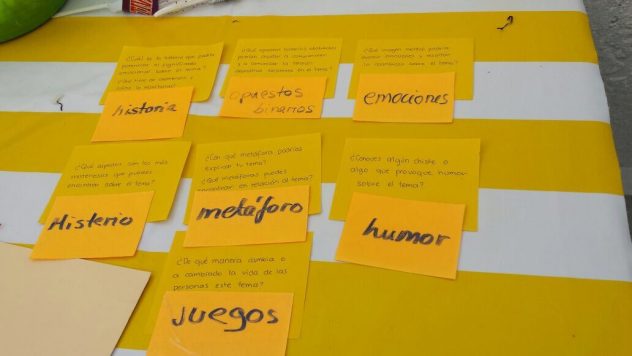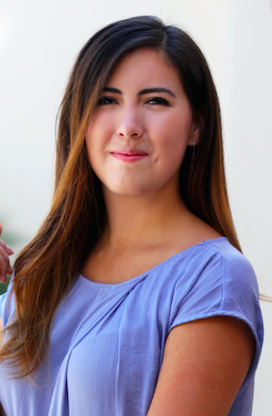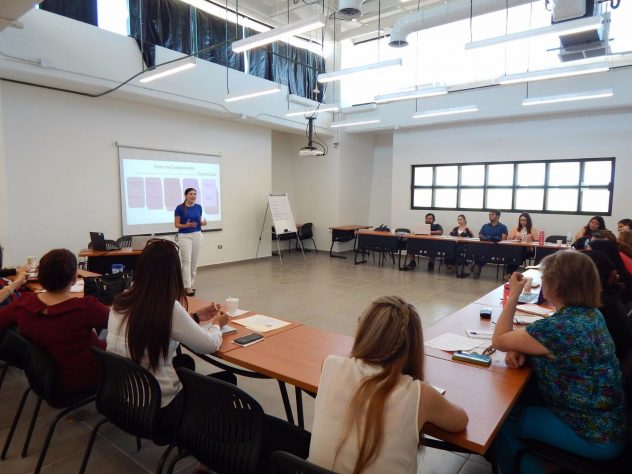By Carolina López (MEd in Imaginative Education; Director/Co-Founder Educación Imaginativa de México)
The role of imagination in education wasn’t always a topic as popular as it is becoming today. Educators around the world are being proactive about engaging students’ imaginations in learning. But I think we’ve been delaying the conversation about the importance of developing teachers’ imaginations. If we are going to put all our efforts in engaging students’ imaginations we need to focus on teachers’ too. And a powerful way to get there (you guessed it) is employing cognitive tools.
With the wonderful support of the Imaginative Education Research Group (IERG), including Mexican and Chilean colleagues, I’ve been involved in teaching Imaginative Education (IE) across my home country, Mexico. I’ve noticed within many groups of diverse educators that they haven’t been as exposed to this topic as much as we’d hope for. Wonderful conversations have come up about how our own perspectives about education influence how we teach and shape our lessons, and about how much we’ve been neglecting the role of imagination.
I would like to share in this post what I’ve found most effective so far in teaching about the importance of imagination in teacher education. As adults, we should have a good range of cognitive tools in our toolkits, but we need to dust them off, start using them (with and for ourselves first) and become mindful in our relationship with them.
You might have read around here about a golden rule for implementing IE effectively, which is to find our own emotional connection to the topics we teach. So, if we are serious about engaging students’ imaginations and emotions in all learning, here are a few things that can help us and that have helped other educators in this adventure.
- Start by wondering how YOU feel about the topics you teach, reflect on their relevance in your own life. How have you sensed, felt and experienced them first hand? These reflections have the potential of opening your perspective about what is worth teaching about them. Also, seek opportunities to talk about your own emotional connections to other educators, which can broaden your views even more.
- Use apparently trivial topics to explore the role of cognitive tools. Explore topics and have conversations about pizza, hurricanes, or the alphabet. All these can be imaginatively explored changing the way we see them by finding their transcendent importance for humanity. This kind of activity helps us to experience first-hand that every topic can be interesting if we know enough about it when playing with it as if it was clay.

- Use ONE topic to explore all cognitive tools. This shows the flexibility and depth of knowledge a topic can have if we think about how our body is engaged with it; how narratives, mental imagery and metaphors could help us understand and communicate powerful ideas about a topic; how finding the exotic, the heroic, and the human emotions tied to it have an intense effect on our understanding; how thinking about general theories and their anomalies, and alternative connected ideas allow us to explore meaningful connections; how thinking critically about the validity of a range of perspectives and ideologies can help us understand a topic in several ways and through different eyes, thinking about the possibilities they open up.
- Engage your philosophic & ironic self. Think about IE through meta-narratives, wonder about the theories that explain it and their anomalies, play with abstract ideas connected to it and question your own sense of agency. Use your cognitive toolkit to explore the potential, challenges, anomalies and possibilities of integrating the principles and practices of IE in your personal and professional life. Look for opportunities to share stories, mental images, or metaphors to make sense of IE’s concepts by connecting them to metanarratives, general theories and abstract ideas.
Having time and space for conversations about the role of imagination in education has been highly appreciated by the educators we’ve worked with. Not only have they envisioned new ways to transform their teaching practices, but they’ve found IE to be a new paradigm with which they experience life.
We recently lived an unsettling experience in Mexico City and its surroundings when a powerful earthquake struck our homes and neighborhoods. Thankfully, our circles of friends and families are OK. But many families were affected and citizens didn’t hesitate for a moment to start helping each other in any possible way they could. From removing pieces of destroyed buildings looking for survivors, to donating basic goods to people in need who lost everything, people came together to help. Help centers and shelters stopped receiving volunteers at one point because there was an incredible response. We’ve been reflecting on this experience over and over, about our emotions, stories, ideas and actions that have emerged by this. We’ve been questioning our role in our communities, in our professions and about our own lives.
Personally, it was invigorating to see how our group in Mexico City showed a deep internalization of IE by trying to make sense of this experience by mindfully using cognitive tools. We had a powerful session sharing stories filled with metaphors, extremes and limits, mental images, human emotions in all their colors; reflecting on idealism and revolt, our sense of agency, helpful and not so helpful metanarratives, trying to make sense of a co-lived tragedy. These cognitive tools lead our final reflections towards possibility and concrete actions towards sustaining solidarity, which is what imagination does for us.
More than ever I continue to reaffirm that IE is not a “topic” you finish learning. Sharing it, using it, talking about it and witnessing other people’s engagement with it continues to prove to me that cognitive tools are powerful and do shape the way we experience and understand the world.
Teaching and learning become two intertwined concepts when thinking imaginatively about education. The task of engaging our own imagination as educators needs much more attention if we are serious about engaging students’ imaginations.
“When you learn, teach. When you get, give.” Maya Angelou
Contact: [email protected]



